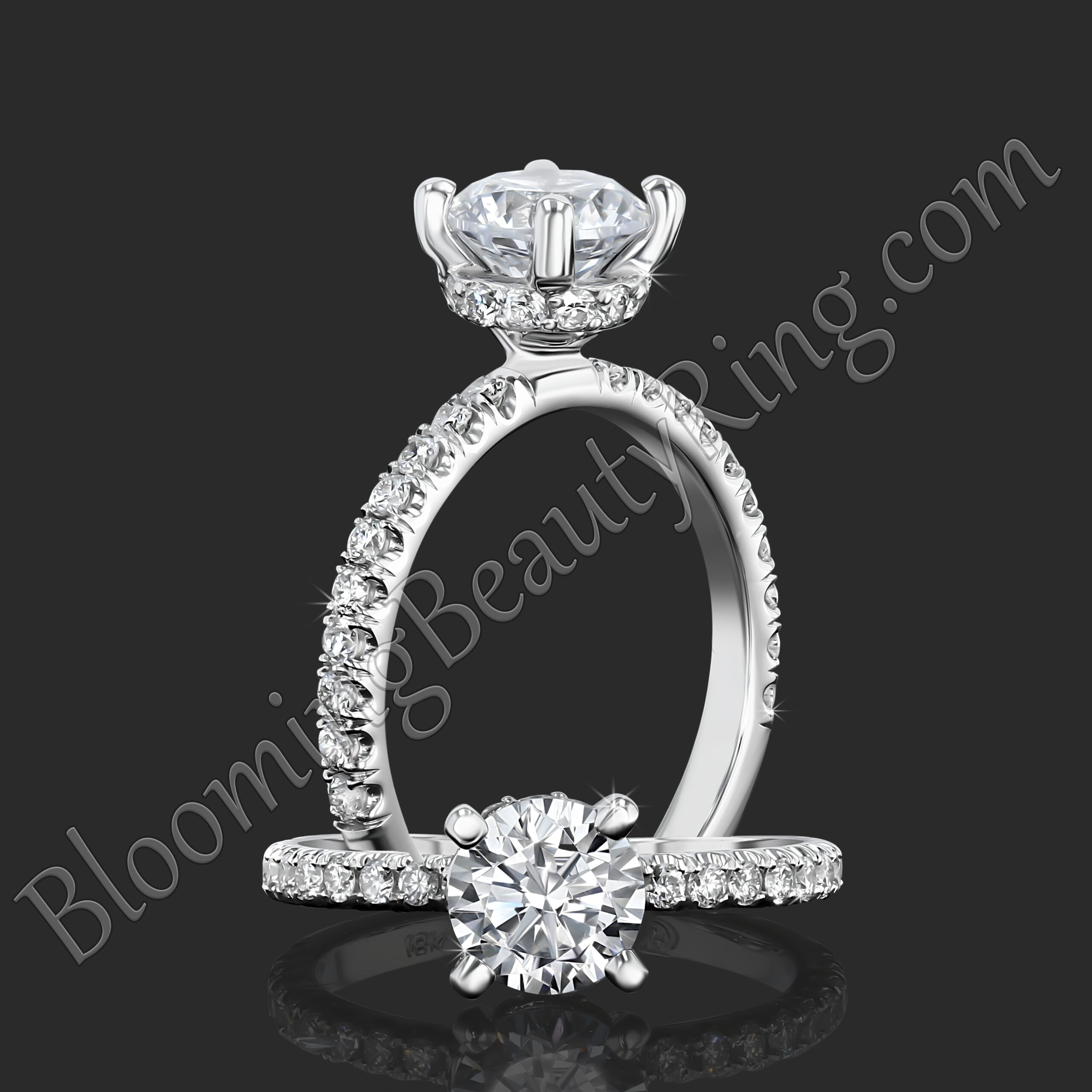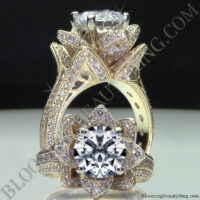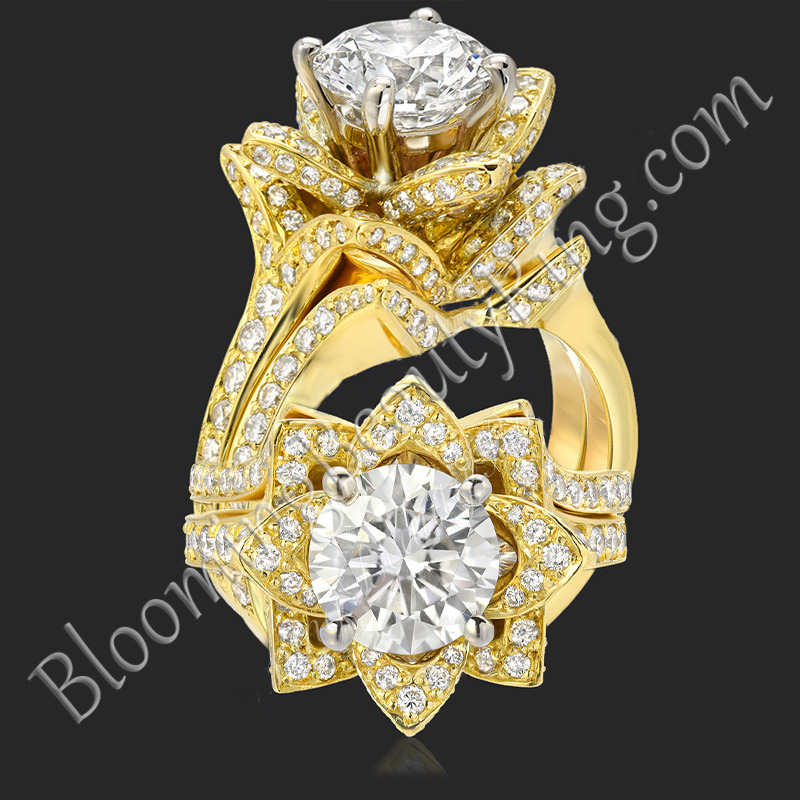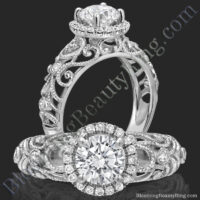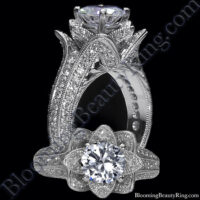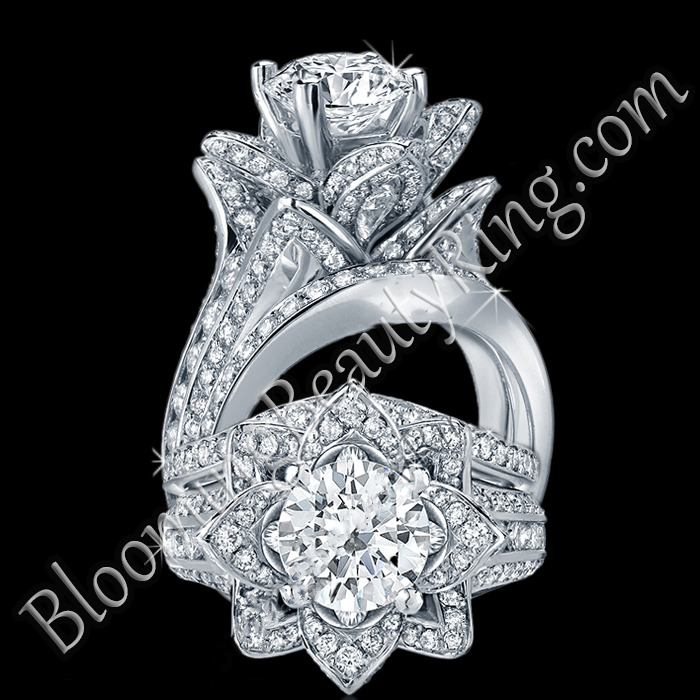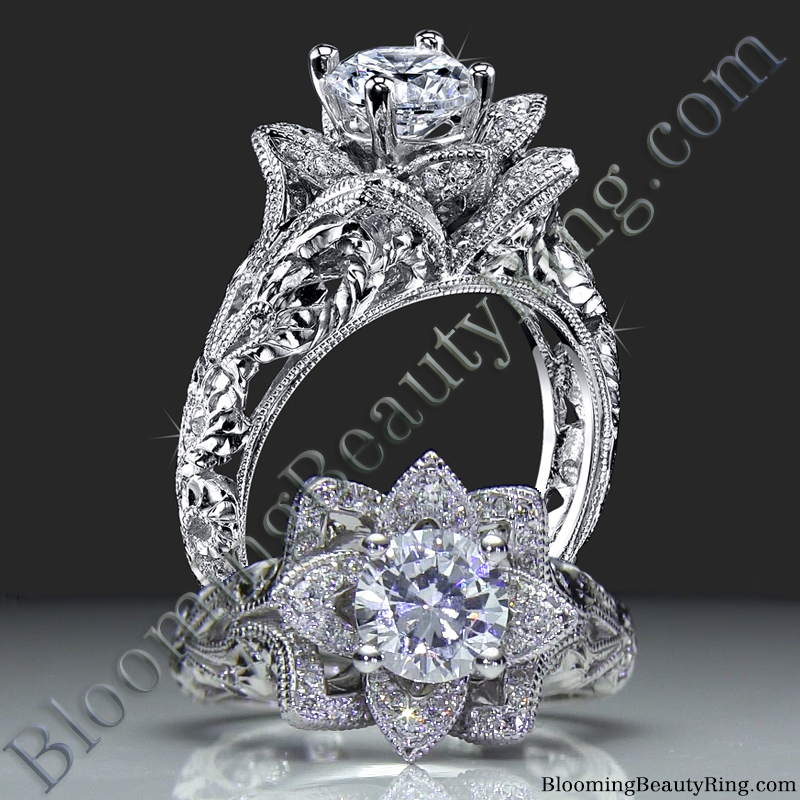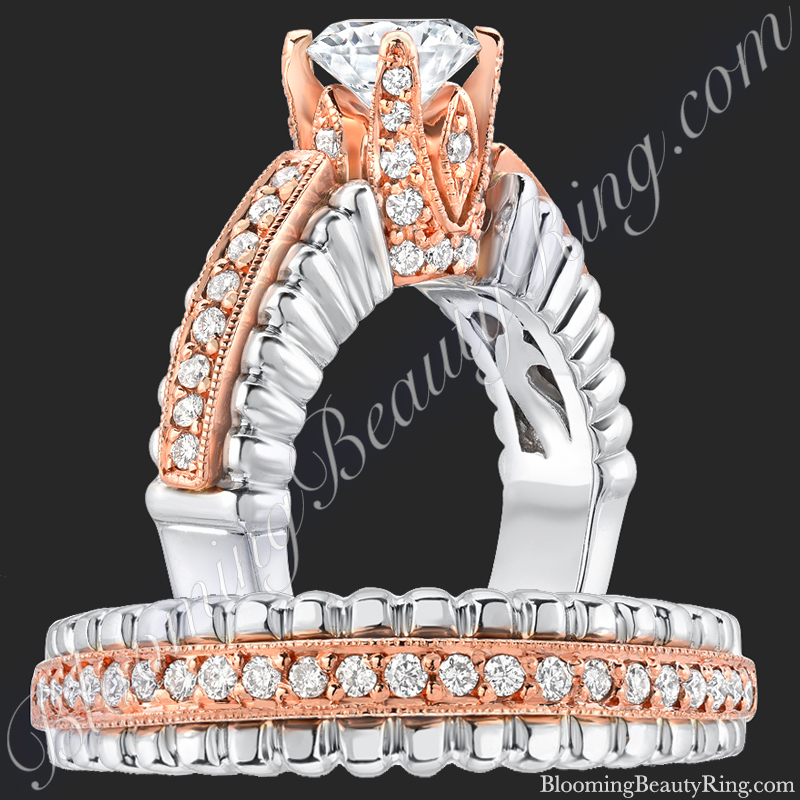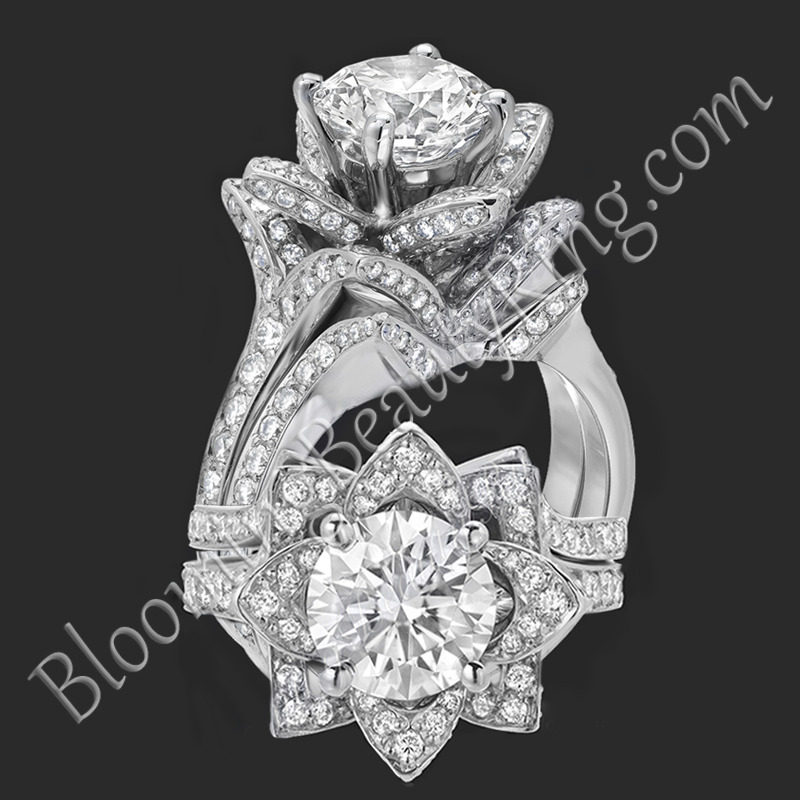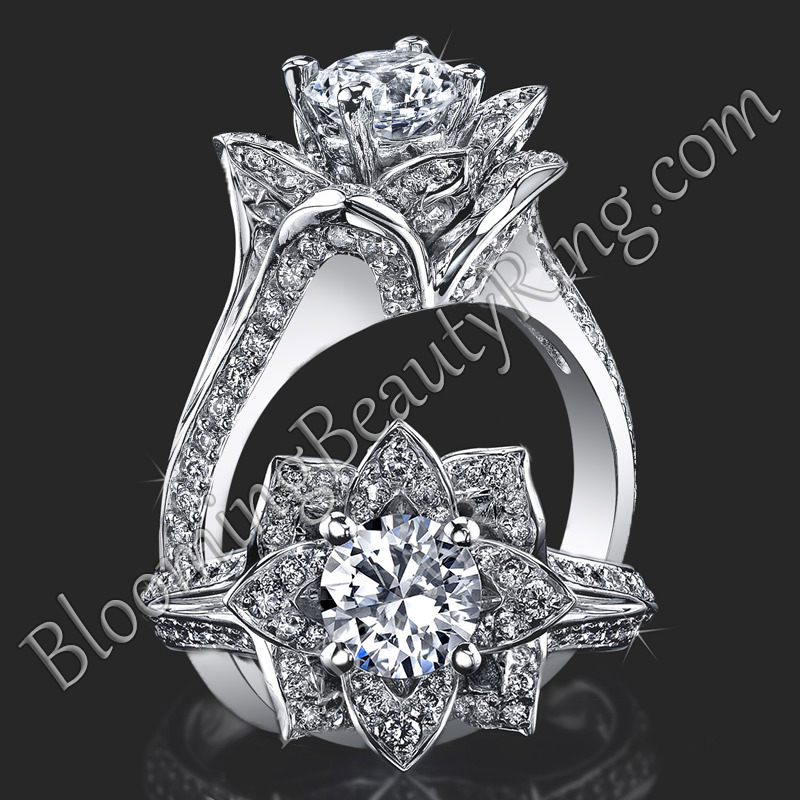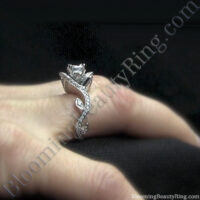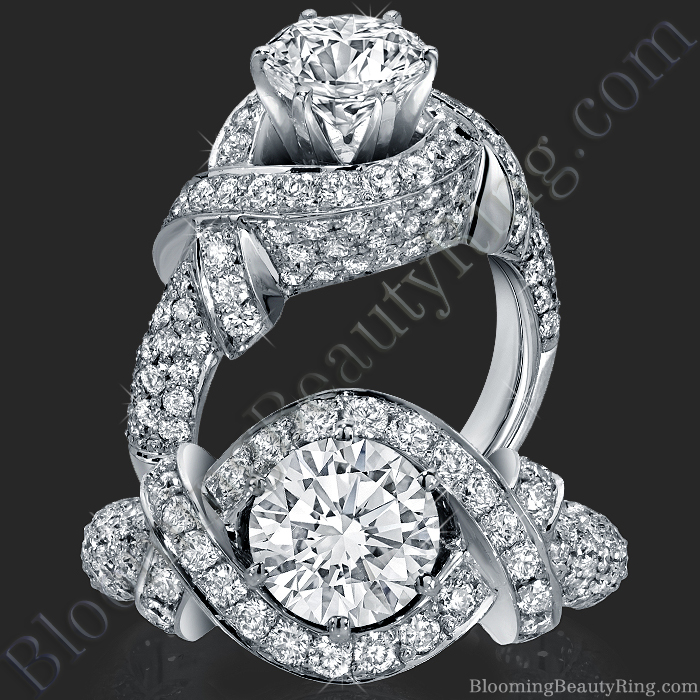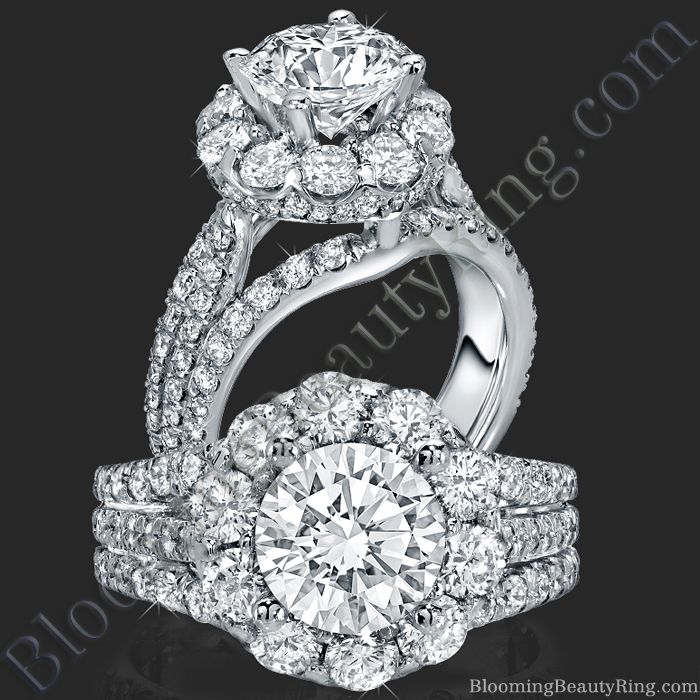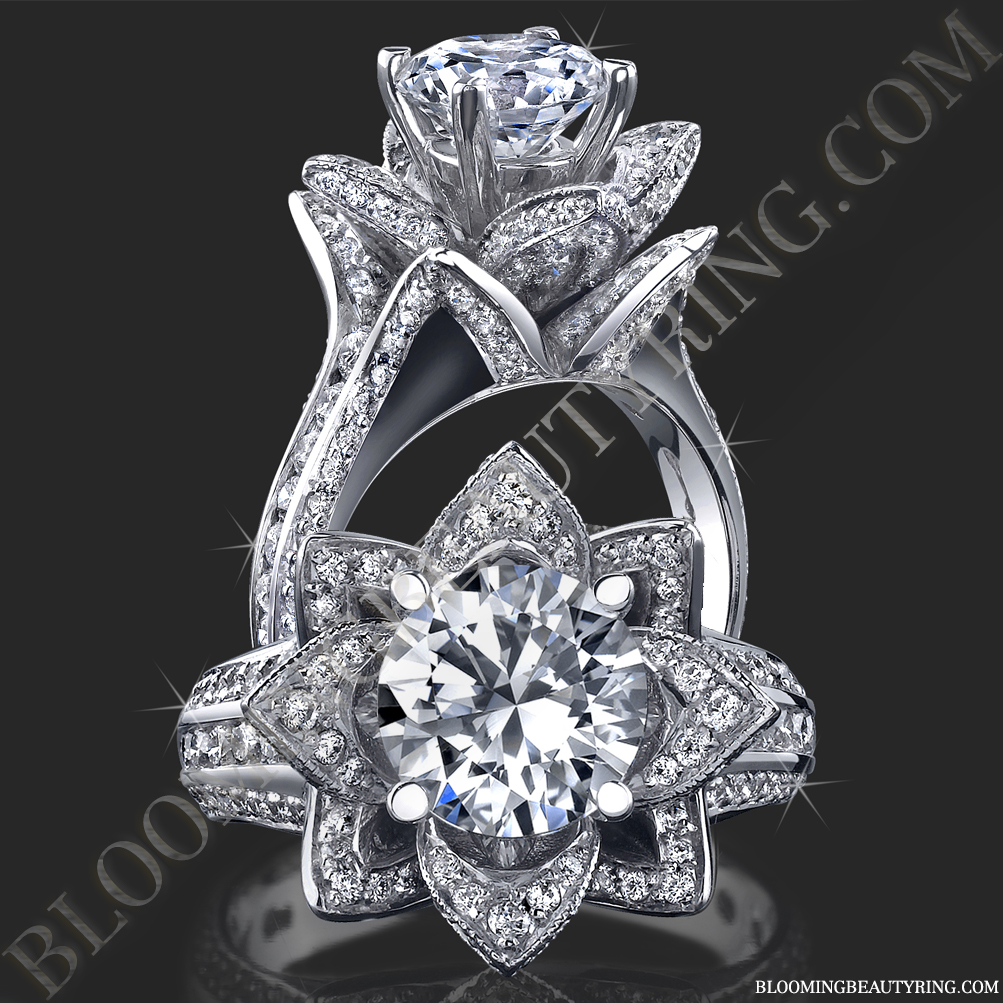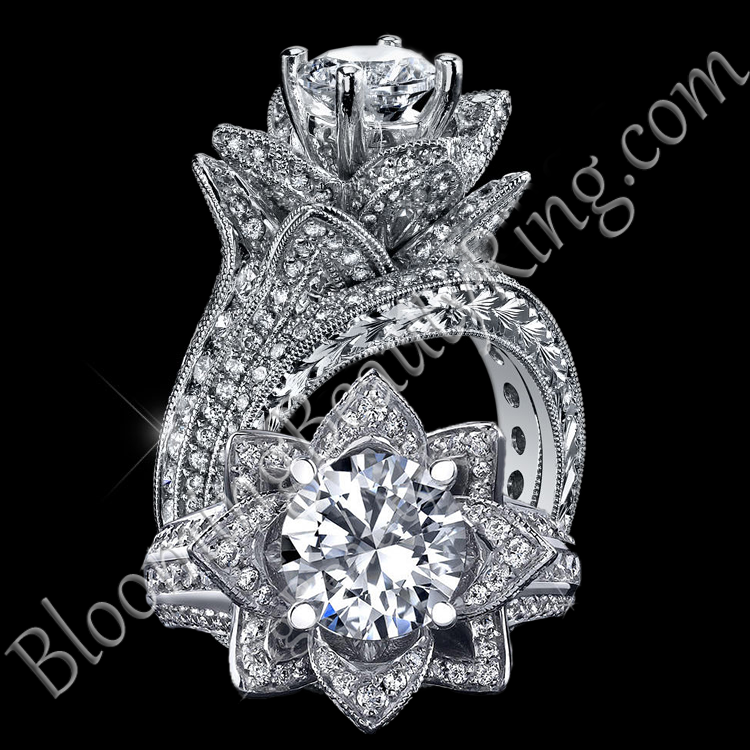~ Diamond Terminology from A to Z ~
There are thousands of terms being used in today's jewelry industry. Some common knowledge, others are obscure and baffling. We've created a database of terminology from A to Z to make it easy, and of course if you still have questions, please do not hesitate to send us an email or give us a call.
Facet
A diamond surface that's described as a plane. It's usually polished and used to bring out the brilliance in a diamond. A typical round diamond for instance will have 58 facets, and depending on how good the diamond cutter is the facets are supposed to let in the light and direct it back up through the diamond to bring out it's brilliance and fire. If the facets are incorrectly cut you could very well end up with a very dull diamond, simply because the facets are not correctly cut and instead of directly the light back up, it will let the light pass though the bottom.
Faceted Girdle
The girdle is the top middle part of the diamond. A diamond cutter can facet the girdle as well, and not just the top, to help bring about the most brilliance possible.
Fancy Diamond
Fancy diamond are typically anything but round cut diamonds. Called Fancy because of the imagination of the other shapes such as marquise, emerald, pear, princess, radiant and so forth. Fancy can also mean the color of the diamond. In fact the more bright the color is the more the diamond is worth. Such as Fancy Blue, and Fancy Red, Yellow..and so forth. However Fancy does not relate to shades of yellow. That's where the color chart comes in. The yellow on the color chart really deals in more dull yellows.
Feather
These are small fractures in a diamond. They are usually caused by the tremendous stress that the diamond suffered while it was growing underground. In some cases the feather both begins and ends within the diamond's surface and, in other cases, the feather begins inside the diamond and extends to the surface. When viewed under magnification, some feathers are transparent and others have a light white appearance to them. The term "feather" comes from the fact that, under magnification, these fractures often seem to have an indistinct, feathery shape to them. While the idea of buying a diamond with "fractures" may sound scary, the reality is that, with normal wear and proper care, most feathers pose no risk to the diamond's stability. Consider this: even with the feathers, these diamonds survived their growth and their journey to the surface intact. Once on the surface, they also survived the mining process, as well as the brutal stresses of the diamond cutting process. Though diamonds are certainly not invulnerable to damage, basic consideration to their care and handling during everyday wear will most likely protect them over the course of several human lifetimes..
Finish
The texture on the outside of a diamond. Sometimes referred to as the polish of the diamond. If the finish, or polish is only par it can make the diamond look cloudy or as crazy as it may sound it can leave little bumps on the outside of the diamond that would still need to be sanded or polished off.
Fire
Also known as Brilliance resulting from just how well the cut of the diamond is.
Fissure
Another name for fracture. Which is a crack on the outside, or surface of the diamond
Flaw, Flaws
Imperfections in a diamond or any other gem. From black carbon spots to feathers to chips, etc...
Fluorescence
A Rating or Scale that diamond graders use to let you know how much of a glowing effect a diamond will have after it has been exposed to ultraviolet light, light from your home or even the moon or sun. The scales are situated in this order; None, Faint, Slight, slightly medium, medium, and strong.
Fluorite
A very beautiful mineral that's crystallized in rectangular or cube shapes often found in the colorful gems such as green, red, blue, white, and fancy yellow.
Four C's
Cut, Clarity, Color, and Carat. These are the combined methods used to determine the value of a diamond. Sometimes referred to as the 5 C's, or 6 C's where the fifth is "cost", and the sixth is "certification".
Fracture
A fracture is an imperfection or crack on the SURFACE of a diamond or any other gem. Not the same as a feather which is on the inside of a diamond or gem. However it's still comparable to the windshield analogy mentioned above in the "feather" listing.
Fracture Filling
Fracture Filling is when you inject a glass like substance that will actually fill the crack. This is also called "Clarity Enhancing". It by no means takes away from the actual brilliance of a diamond unless of course done wrong. This is a completely legal and quite popular practice that, in the end, should enhance the beauty of your diamond to it's maximum potential.
It's also worth mentioning that all Enhanced, or Fractured Filled diamonds must be advertised to the customer. It is unlawful for a diamond seller to sell a fractured filled diamond without first letting the customer know first. A MUST!!! Also note there is one other way to detect fracture filling in a diamond, and that is to hold the diamond up in the light and twist your hands slightly and let the brilliance of the diamond show. A diamond will typically show the spectrum of a rainbow when you do this, however ONLY if the diamond is fractured filled will you see the color pink! A pink sparkle will occur because of the glass like substance used to fill the fracture. In fact this is why some people actually prefer fractured filled diamonds. They enjoy the pink sparkle along with the rest of the colors. If you see a pink sparkle then it's been Enhanced, or better put, Fractured Filled.


